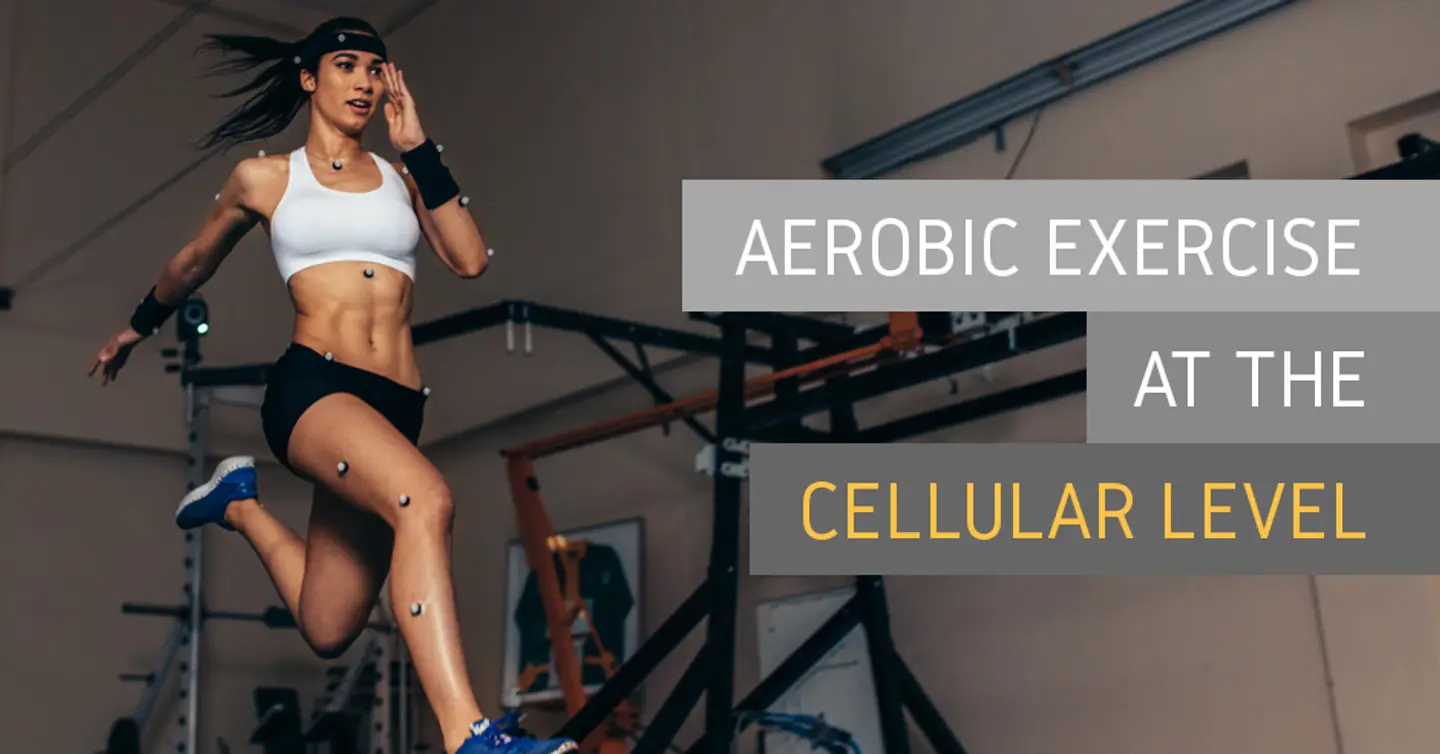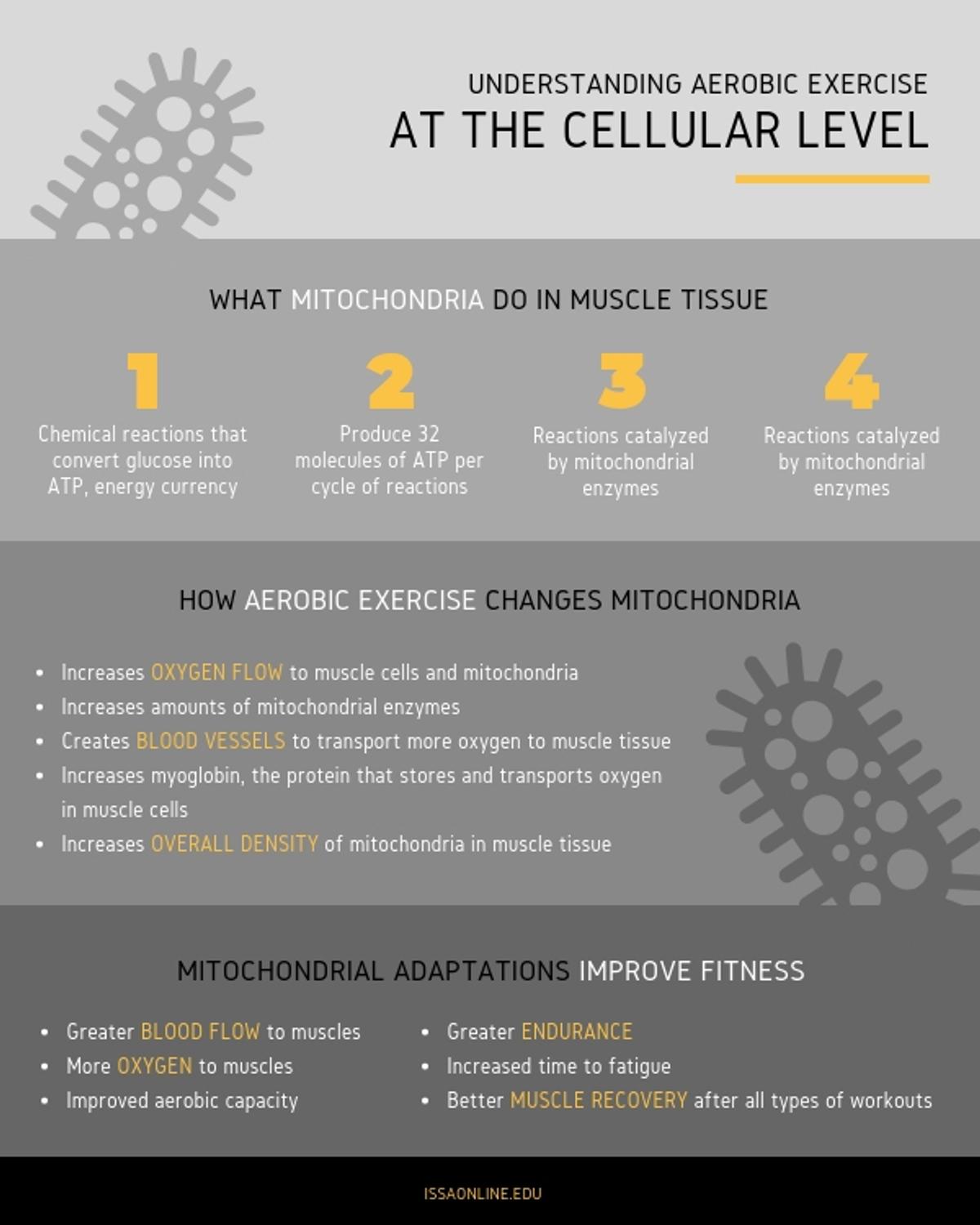
Mitochondrial Adaptations to Aerobic Training
Reading Time: 3 minutes 11 seconds
BY: Ronnie Nicastro
DATE: 2018-09-19
The best trainers can educate their clients as well as help them achieve their goals.
When your clients who love to lift weights and do intense HIIT workouts don't want to jog or spending 30 minutes on the stair climber, how do you explain your reasoning?
Aerobic workouts are important for overall fitness, even for non-endurance athletes. They improve cardiovascular fitness, increase the time to fatigue, burn fat, and promote recovery in muscle tissue.
Help your resistant clients understand these benefits on a deeper level so they are more motivated to fit in essential, aerobic workouts.
What Do the Mitochondria Actually Do?
Most people at least remember from high school or college biology that the mitochondria are the "powerhouses of the cell." In other words, they produce energy, and cells in muscle tissue are loaded with them.
Aerobic training helps mitochondria make energy more efficiently. Through a series of adaptations exercise improves the speed and efficiency of these processes:
Glycolysis. During the process of glycolysis enzymes in the mitochondria break down glucose molecules, changing them into compounds called pyruvates. This reaction does not require oxygen and produces two molecules of ATP, the body's energy currency.
The Krebs cycle. Pyruvates then move on to the Krebs cycle, a series of reactions again catalyzed by enzymes. The end of the cycle results in two more molecules of ATP.
The electron transport chain. The other molecules produced in the Krebs cycle move to the electron transport chain, another series of chemical reactions resulting in a whopping 28 molecules of ATP.
All together the mitochondria produce 32 ATP molecules for energy with just one cycle of reactions. While the first step is anaerobic, most of the process requires oxygen.
So, the more oxygen that gets to muscle cells, and the more quickly this happens, the faster and more efficiently the mitochondria can produce energy.
Aerobic Mitochondrial Adaptations
There seem to be multiple ways in which the mitochondria adapt in response to aerobic exercise, all of which ultimately lead to greater fitness:
Aerobic exercise uses oxygen, which directly relates to how the mitochondria function. The more oxygen you pump to your muscle cells and their mitochondria through aerobic workouts, the faster and better they work to produce energy.
There is also an increase in mitochondrial enzymes. These proteins that are necessary for the metabolic reactions in the mitochondria seem to be increased when the body undergoes aerobic exercise.[1]
The overall density of mitochondria in muscle tissue increases in response to aerobic workouts. More mitochondria means greater use of oxygen to produce more ATP and energy.
Aerobic exercise also leads to an increase in myoglobin in muscle tissue. This is a protein that stores oxygen and transports it into cells so that mitochondria can use it to make more ATP molecules.
Working out aerobically has been shown to trigger angiogenesis, the growth of new blood vessels. Blood vessels transport blood and oxygen to muscles, and with more of them the mitochondria can get and use oxygen more quickly and efficiently.
Could Mitochondrial Adaptations Help You Live Longer?
There is also some research that suggests aging in humans is related to mitochondrial changes. Aging is a complicated process that is not fully understood, and there are many factors that are involved, but studies show that damage to mitochondrial DNA, reduced ability to produce ATP, and resulting muscle weakness could be important culprits.
This same research suggests that aerobic exercise can counteract aging because it increases mitochondrial density and activity in muscle tissue. As we age we tend to be less physically active, and this may contribute to the aging process. By purposely engaging in aerobic exercise, older adults may be able to slow some aspects of aging.
Mitochondrial changes triggered by aerobic exercise are at the root of why this kind of workout is so important to overall fitness and well-being. Help your clients feel more empowered to embrace the long, slow jog or swim by educating them. When they understand what happens during aerobic workouts, they will be more willing to do them. Check out our comprehensive Fitness Trainer program.

Share this houndout with your clients by clicking HERE.
References
Lundby, C., Jacobs, R.A. (2016). Adaptations of Skeletal Muscle Mitochondria to Exercise Training. Experimental Physiology, 101 (1), 17-22
Margolis, L.M., Pasiakos, S.M. (2013). Optimizing Intramuscular Adaptations to Aerobic Exercise: Effects of Carbohydrate Restriction and Protein Supplementation on Mitochondrial Biogenesis. Advanced Nutrition, 4 (6), 657-664
Eluamai, A., Brooks, K. (2013) Effect of Aerobic Exercise on Mitochondrial DNA and Aging. Journal of Exercise Science & Fitness. 11 (1) 1-5